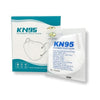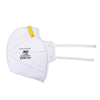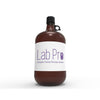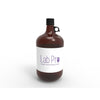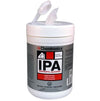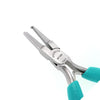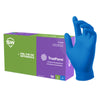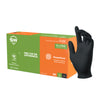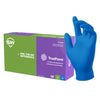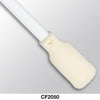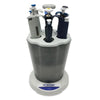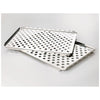In this experiment the indicator eriochrome black T (EBT) is used to signal the presence of ions in the water sample. EBT binds with free metal ions in the water to form a pink complex. EDTA has a stronger affinity for the metal ions than EBT so when EDTA is added it replaces the EBT and the EBT returns to its blue, uncomplexed color. The blue color is used as the end point in the titration. A sample of tap water is treated with EBT indicator. If the indicator turns from blue to pink, metal ions such as calcium and magnesium are present. To determine the concentration of ions present, the sample is titrated with a known molar concentration of EDTA.




